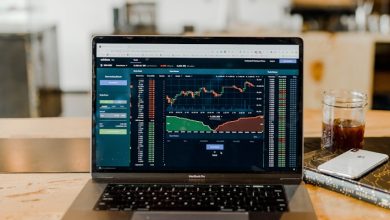How to Use Dollar-Cost Averaging for Bitcoin Investments

- Understanding Dollar-Cost Averaging and its Benefits
- Steps to Implement Dollar-Cost Averaging for Bitcoin Investments
- Maximizing Returns with Dollar-Cost Averaging Strategy for Bitcoin
- Common Mistakes to Avoid When Using Dollar-Cost Averaging for Bitcoin
- Comparing Dollar-Cost Averaging to Lump Sum Investing in Bitcoin
- Tips for Successful Bitcoin Investments through Dollar-Cost Averaging
Understanding Dollar-Cost Averaging and its Benefits
Dollar-cost averaging is a strategy where an investor regularly buys a fixed dollar amount of a particular investment, regardless of the asset’s price. This approach helps to reduce the impact of market volatility on the overall purchase price. When it comes to Bitcoin investments, dollar-cost averaging can be a beneficial strategy for those looking to enter the cryptocurrency market gradually.
By consistently investing a set amount in Bitcoin at regular intervals, investors can avoid trying to time the market and instead focus on accumulating the asset over time. This method can help mitigate the risk of buying Bitcoin at a high price during a market peak, as well as reduce the impact of sharp price fluctuations on the overall investment.
One of the key benefits of dollar-cost averaging for Bitcoin investments is that it allows investors to average out the purchase price of their holdings over time. This means that investors are less exposed to short-term market volatility and can potentially benefit from the long-term growth potential of Bitcoin.
Steps to Implement Dollar-Cost Averaging for Bitcoin Investments
Implementing dollar-cost averaging for Bitcoin investments can be a strategic way to mitigate the risk of market volatility. Follow these steps to start utilizing this investment strategy:
- Set a regular schedule for purchasing Bitcoin: Determine how often you want to invest in Bitcoin, whether it’s daily, weekly, or monthly. Consistency is key in dollar-cost averaging.
- Decide on the amount to invest: Choose a fixed amount of money to invest each time, regardless of the current price of Bitcoin. This approach helps to average out the cost over time.
- Select a reliable exchange or platform: Find a reputable exchange or investment platform where you can set up automatic recurring purchases of Bitcoin.
- Monitor your investments: Keep track of your purchases and the performance of Bitcoin over time. This will help you assess the effectiveness of dollar-cost averaging for your portfolio.
- Stay disciplined: Stick to your investment plan and resist the urge to react to short-term price fluctuations. Dollar-cost averaging is a long-term strategy.
By following these steps, you can effectively implement dollar-cost averaging for your Bitcoin investments and potentially reduce the impact of market volatility on your portfolio.
Maximizing Returns with Dollar-Cost Averaging Strategy for Bitcoin
Investing in Bitcoin can be a lucrative opportunity, but it also comes with its fair share of risks. One strategy that can help mitigate these risks is dollar-cost averaging. This strategy involves investing a fixed amount of money in Bitcoin at regular intervals, regardless of the price. By doing this, investors can take advantage of market fluctuations and potentially maximize their returns over time.
Dollar-cost averaging is particularly beneficial in the volatile cryptocurrency market, where prices can fluctuate dramatically in a short period. By investing a fixed amount regularly, investors can avoid the temptation to time the market and instead focus on accumulating Bitcoin over the long term. This approach can help smooth out the impact of price fluctuations and reduce the risk of making poor investment decisions based on short-term market movements.
One of the key advantages of dollar-cost averaging is that it helps investors avoid the pitfalls of emotional investing. When prices are rising, investors may be tempted to buy more Bitcoin out of fear of missing out, only to see prices fall shortly after. Conversely, when prices are falling, investors may panic and sell their Bitcoin at a loss. By sticking to a regular investment schedule, investors can avoid these emotional traps and stay focused on their long-term investment goals.
Overall, dollar-cost averaging can be a simple yet effective strategy for maximizing returns on Bitcoin investments. By investing a fixed amount regularly, regardless of market conditions, investors can take advantage of market fluctuations and potentially achieve better long-term results. So, consider incorporating dollar-cost averaging into your investment strategy to help navigate the ups and downs of the cryptocurrency market.
Common Mistakes to Avoid When Using Dollar-Cost Averaging for Bitcoin
When utilizing dollar-cost averaging for Bitcoin investments, it is important to be aware of common mistakes that should be avoided to maximize your returns and minimize risks. Here are some key pitfalls to watch out for:
- Timing the Market: One of the biggest mistakes investors make is trying to time the market by waiting for the perfect moment to make a purchase. This can lead to missed opportunities and increased volatility in your portfolio.
- Ignoring Fees: Another mistake to avoid is ignoring the impact of fees on your investments. Be sure to factor in transaction fees and other costs associated with buying Bitcoin regularly.
- Overleveraging: It is essential to avoid overleveraging your investments, as this can expose you to unnecessary risks. Stick to a consistent investment strategy and avoid taking on too much debt.
- Emotional Investing: Making investment decisions based on emotions rather than logic can lead to poor outcomes. Stay disciplined and stick to your investment plan, regardless of market fluctuations.
- Not Diversifying: Failing to diversify your investments can increase your exposure to risk. Consider spreading your investments across different assets to mitigate potential losses.
Comparing Dollar-Cost Averaging to Lump Sum Investing in Bitcoin
When it comes to investing in Bitcoin, there are two primary strategies that individuals often consider: dollar-cost averaging and lump sum investing. Both approaches have their own advantages and disadvantages, and it is important to understand the differences between the two before making a decision.
With dollar-cost averaging, investors regularly invest a fixed amount of money into Bitcoin at scheduled intervals, regardless of the current price. This strategy helps mitigate the impact of market volatility, as investors are buying both when prices are high and when they are low. By spreading out their investments over time, individuals can potentially reduce the risk of making a large investment at an unfavorable moment.
On the other hand, lump sum investing involves putting a single, large sum of money into Bitcoin all at once. While this approach can be beneficial if Bitcoin prices are expected to rise significantly in the future, it also exposes investors to the risk of buying at a peak and experiencing immediate losses if prices decline shortly after their investment.
Comparing dollar-cost averaging to lump sum investing in Bitcoin, it is clear that each strategy has its own unique advantages and drawbacks. Dollar-cost averaging can help reduce the impact of market volatility and minimize the risk of making a poor investment decision. However, lump sum investing has the potential for higher returns if Bitcoin prices increase rapidly.
Tips for Successful Bitcoin Investments through Dollar-Cost Averaging
For successful Bitcoin investments through dollar-cost averaging, it is essential to follow some tips to maximize your returns and minimize risks. Here are some key strategies to consider:
- Stay consistent with your investment schedule to take advantage of price fluctuations over time.
- Set a budget for your investments and stick to it, regardless of market conditions.
- Research and analyze the market trends regularly to make informed decisions about when to buy or sell.
- Diversify your investment portfolio to spread out risks and maximize potential gains.
- Consider using a reputable exchange platform to buy and sell Bitcoins securely.
By following these tips, you can navigate the volatile cryptocurrency market more effectively and improve your chances of success with Bitcoin investments through dollar-cost averaging.



